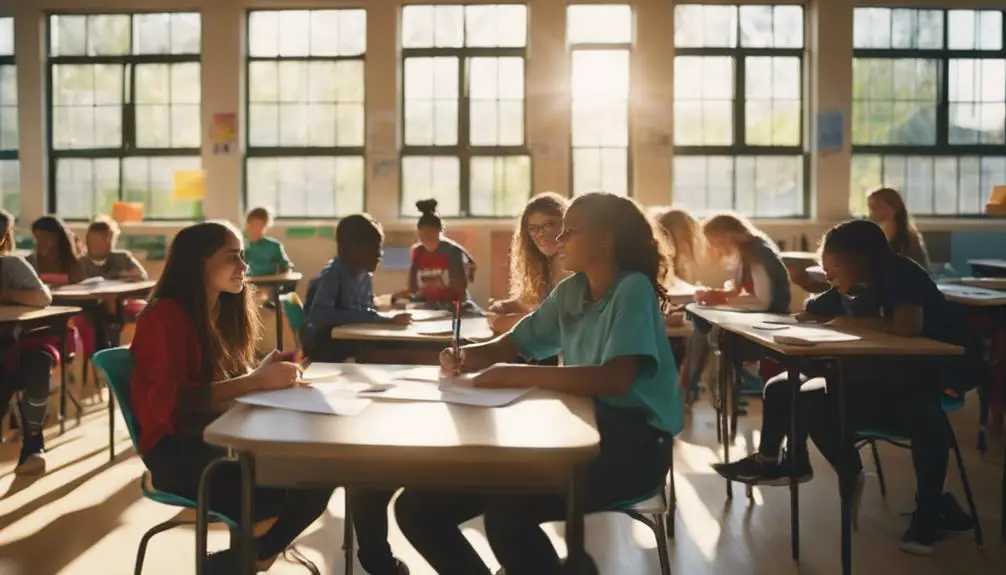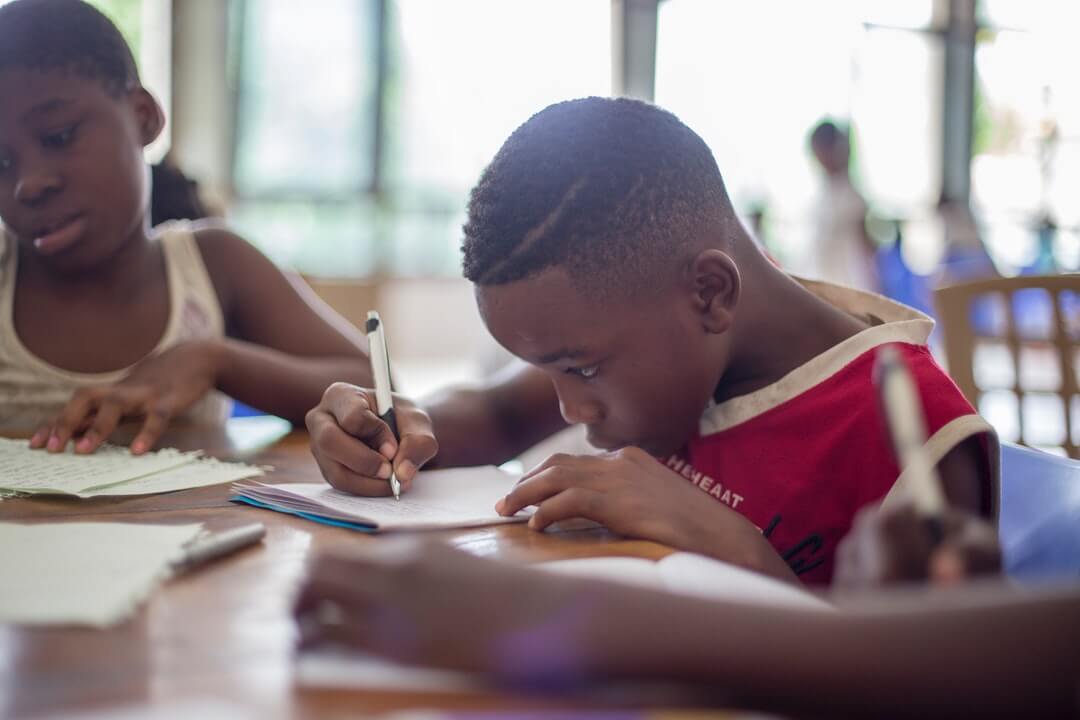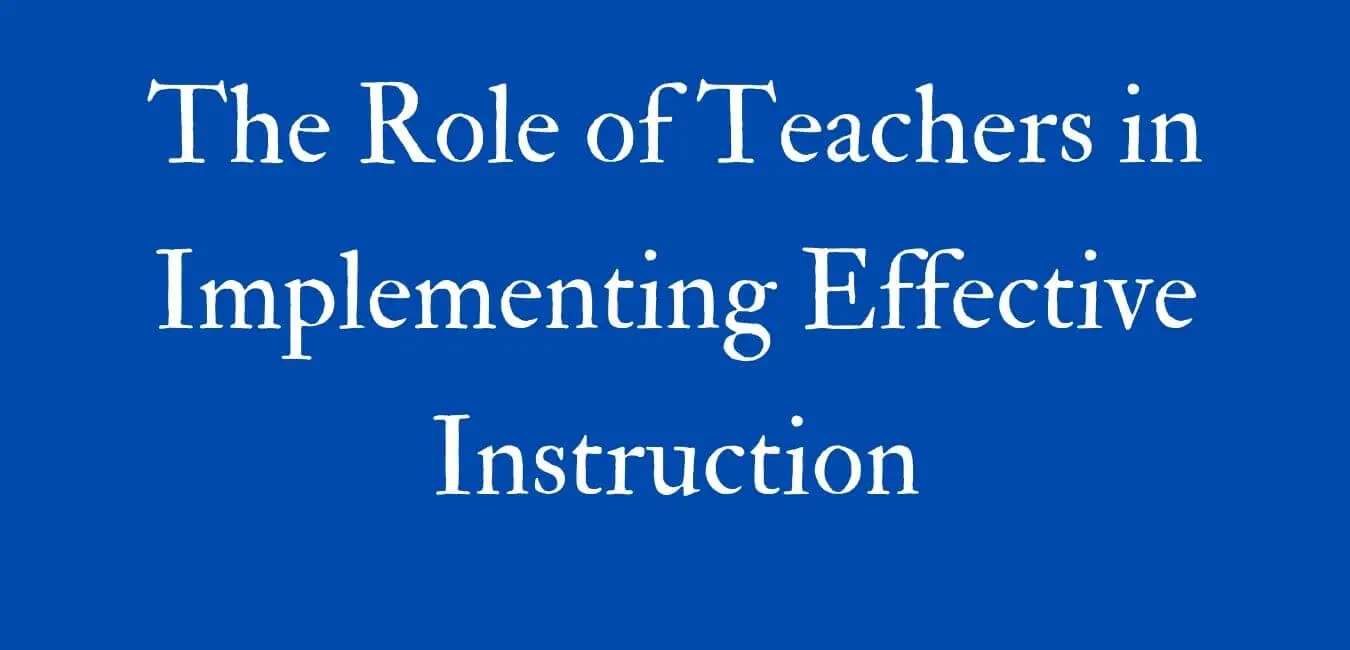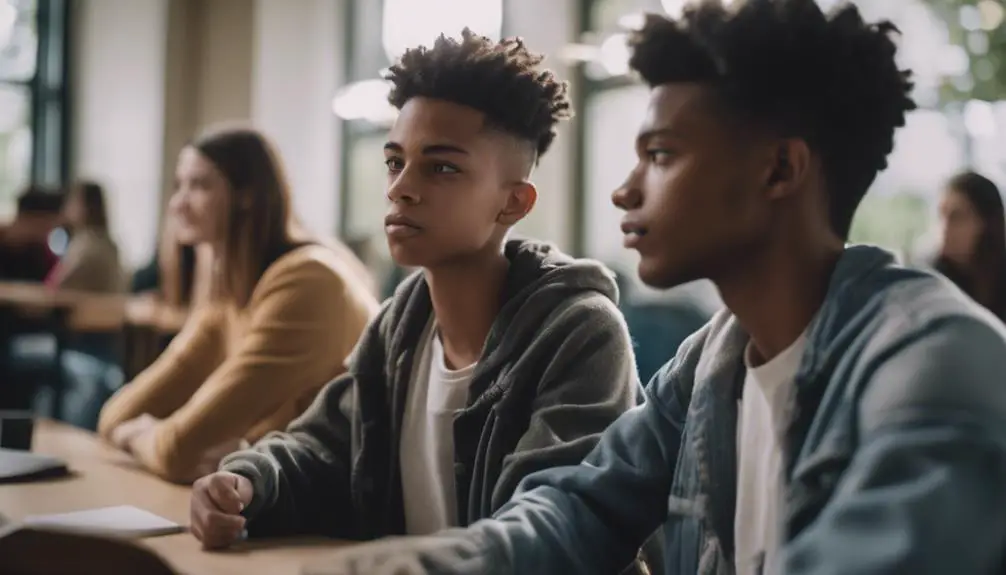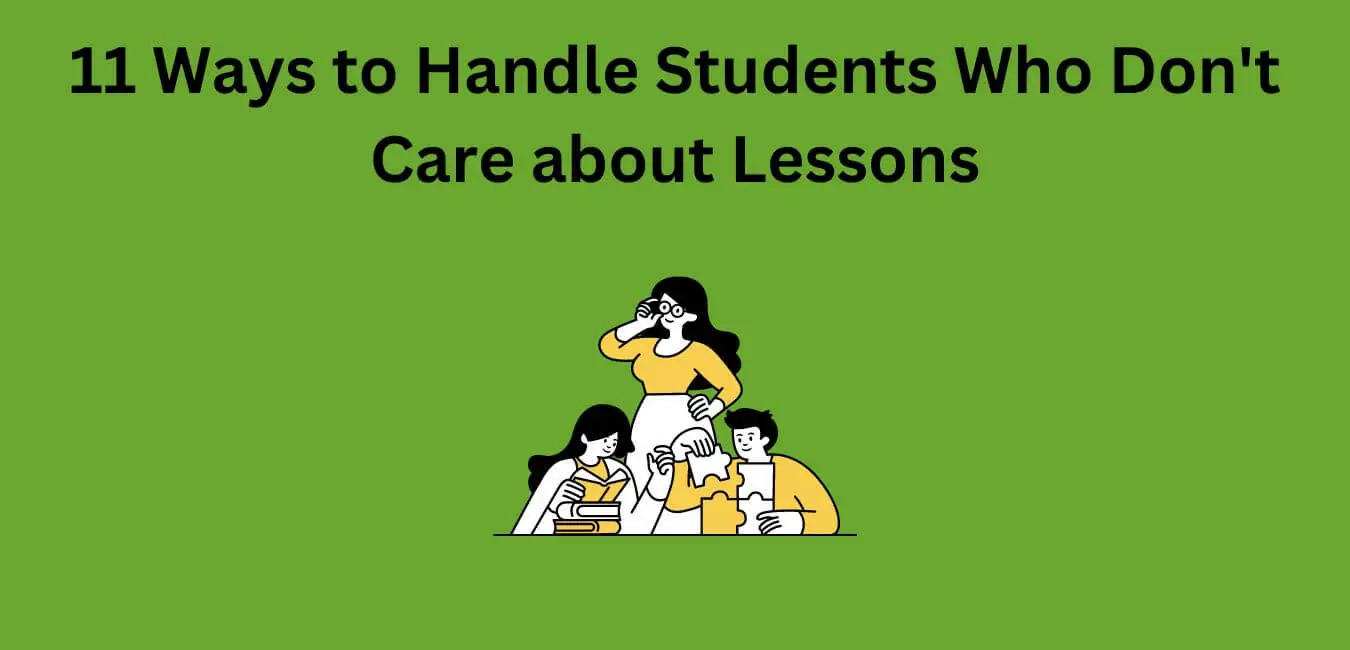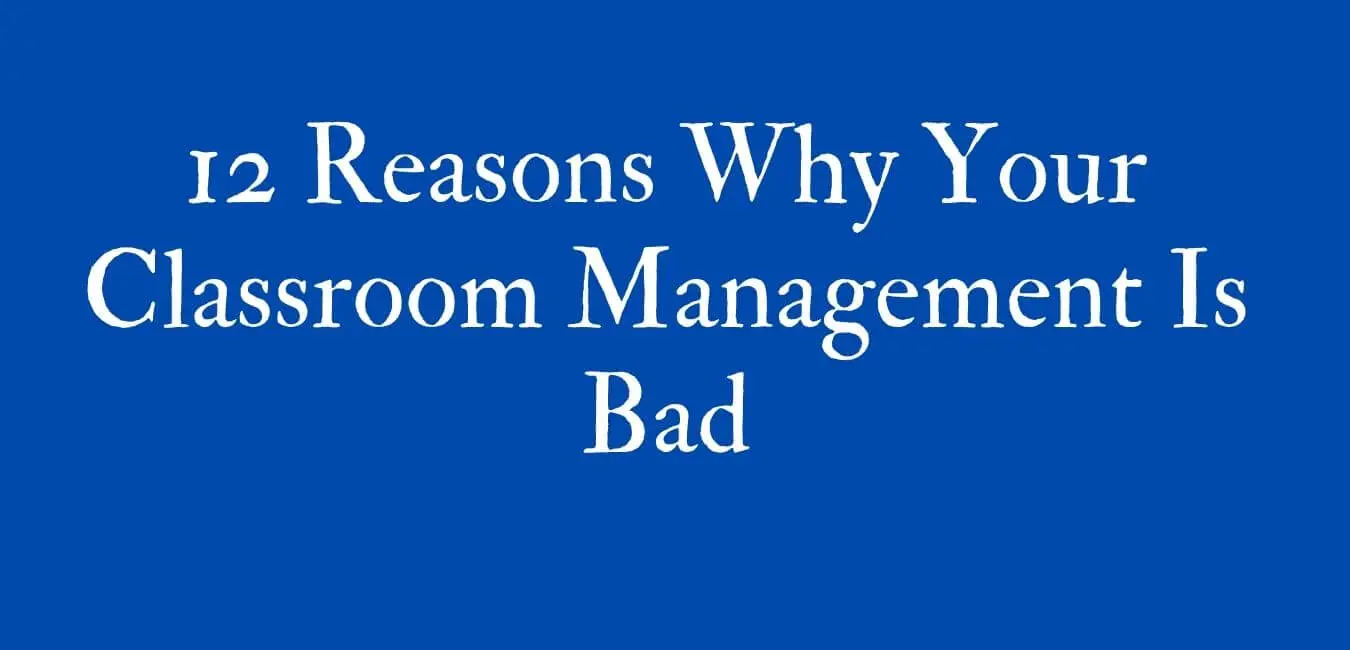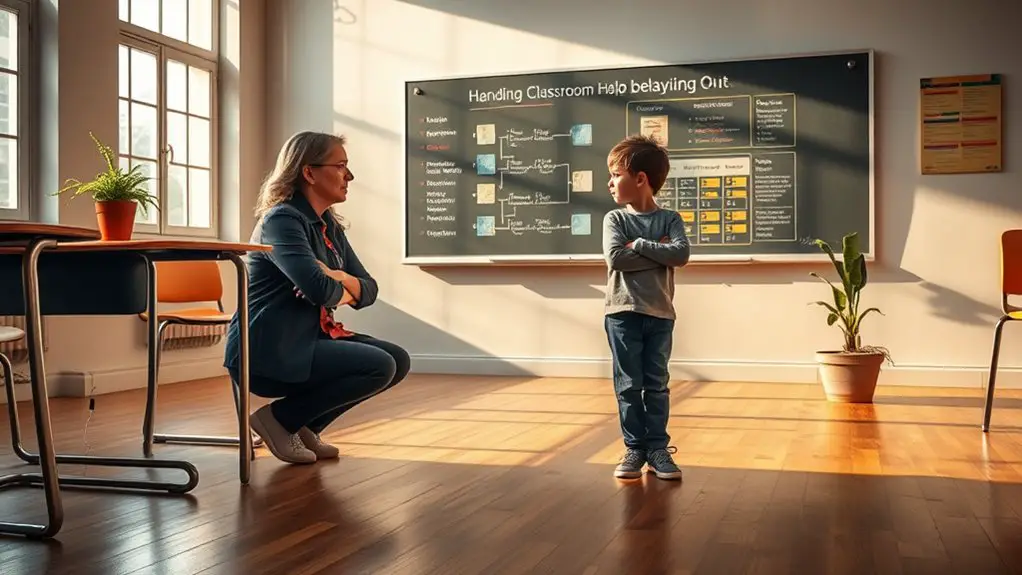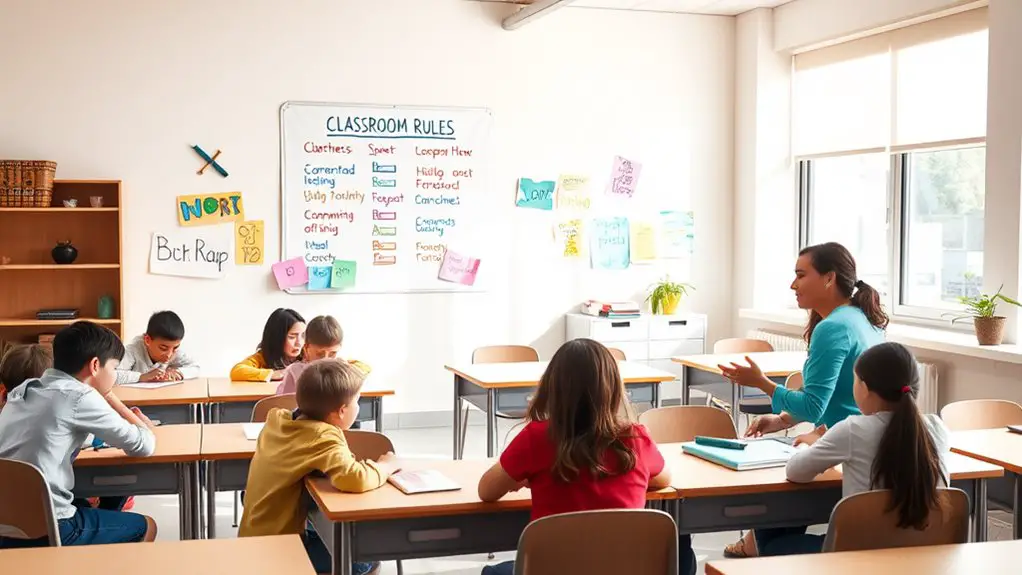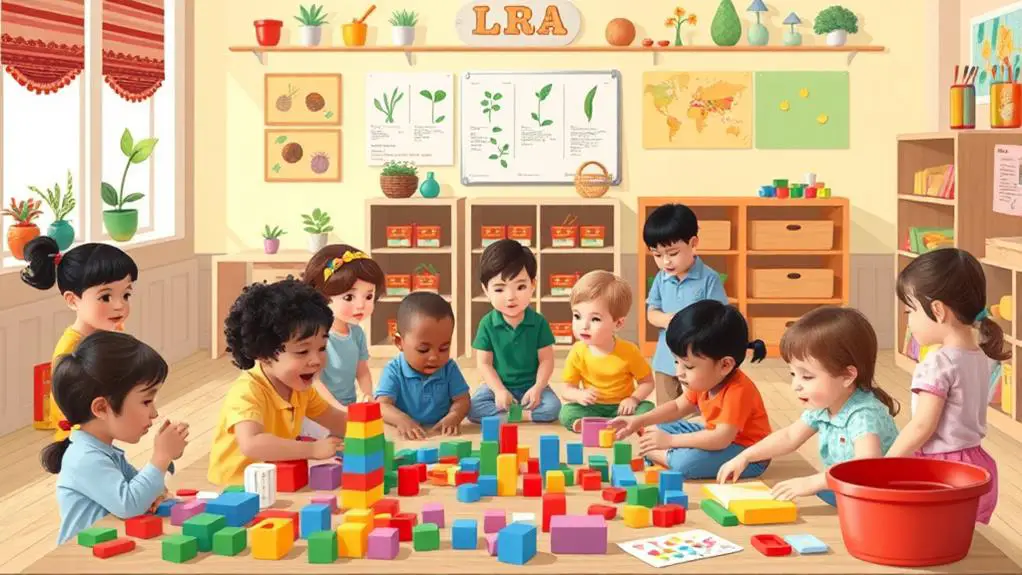Teachers play a vital role in empowering their students to achieve success, and this process involves more than just standard teaching methods. By building strong, positive relationships with their students and promoting a growth mindset, educators cultivate an atmosphere where students feel appreciated and driven to learn. This approach is crucial because it helps students develop resilience and a sense of belonging, which are essential for their academic and personal growth.
To create a culture of empowerment, teachers can implement several effective strategies. For instance, providing opportunities for student choice in assignments can enhance engagement. When students have a say in their learning, they are more likely to take ownership and feel invested in their education.
Another powerful method is incorporating collaborative learning experiences. Group work not only fosters teamwork but also allows students to learn from one another, building confidence as they share ideas and tackle challenges together.
Feedback is another critical component in supporting students’ success. Constructive feedback helps students understand their strengths and areas for improvement, guiding them on their educational journey. For example, instead of simply marking an assignment as wrong, a teacher might provide specific comments on what the student did well and where they can improve, encouraging a mindset focused on learning and progress.
In conclusion, the ways teachers empower students to succeed are diverse and impactful. By fostering relationships, encouraging student choice, promoting collaboration, and providing meaningful feedback, educators significantly influence their students’ educational experiences, helping them navigate their paths to success.
Build Positive Relationships
Building positive relationships is essential for empowering students to succeed. Trust development is the cornerstone of these connections. When students feel safe and respected, they’re more receptive to learning. Improving our communication skills fosters an environment where emotional support flows freely, enabling students to share their concerns and aspirations.
Mutual respect plays a critical role in this process. I strive to treat my students as equals, which nurtures social connections and encourages collaboration.
Cultivating empathy is vital; I actively listen to their experiences and feelings, allowing me to better understand their perspectives. When conflicts arise, I focus on resolving them through open dialogue, teaching students how to address their disagreements in a constructive manner.
Mentorship opportunities further enrich these relationships. Engaging with families is important to promote family involvement, ensuring that we’re all aligned in our efforts. Community engagement also contributes significantly—by linking students with local resources, we can enhance their support networks.
Foster a Growth Mindset
Fostering a growth mindset is vital for the success of our students. Emphasizing effort rather than innate ability helps them understand that persistence can lead to improvement. Encouraging them to take risks in their learning journey enables them to embrace challenges and view setbacks as chances for growth. This approach not only builds resilience but also cultivates a love for learning that can benefit them throughout their lives.
For instance, when students encounter a difficult math problem, instead of feeling defeated, they can learn to see it as an opportunity to enhance their problem-solving skills. Teachers can support this process by providing constructive feedback that highlights the importance of effort and strategy.
In practical terms, educators can introduce activities that encourage collaborative learning, such as group projects or peer tutoring, where students can learn from each other’s experiences. These methods not only reinforce the idea of growth through effort but also foster a supportive classroom environment.
Emphasizing Effort Over Ability
Focusing on effort rather than ability is crucial for nurturing a growth mindset in students. When I highlight the importance of hard work and determination, my students begin to grasp that improvement comes from dedication, not just natural talent.
It’s vital to change the discussion from how capable someone is to the significance of trying and learning from failures.
When I acknowledge my students’ hard work, I notice their motivation increases. They start to see challenges as chances for growth and understand that their commitment is more significant than a fixed skill set.
I emphasize the importance of celebrating small victories, reinforcing the belief that each little progress brings them closer to success.
I also guide my students to think about their learning journeys. I ask them to evaluate which strategies were effective and which were not. This practice helps them recognize that perseverance is essential.
By fostering an environment where effort is acknowledged and appreciated, I encourage my students to embrace challenges and build resilience.
In this way, I’m not only covering academic topics; I’m equipping them with the mindset necessary for success in their future endeavors.
Encouraging Risk-Taking Learning
Risk-taking plays a vital role in fostering a growth mindset, as it paves the way for new learning opportunities. Encouraging students to embrace risk-taking helps cultivate an environment where creativity can thrive. It’s essential to reassure them that experiencing safe failures is a natural part of the learning process.
Here are some strategies I use to nurture this mindset in my classroom:
- Show Vulnerability: I share my own mistakes and learning experiences openly. This approach demonstrates to students that failure isn’t something to dread but rather a stepping stone to growth.
- Recognize Effort: I place emphasis on the journey rather than solely the end result. Acknowledging the bravery it takes to try new things helps students understand that effort is what truly matters.
- Foster a Supportive Atmosphere: I create a classroom culture where students feel comfortable expressing themselves and taking risks without fear of judgment. This sense of safety encourages them to step outside their comfort zones.
- Encourage Exploration: I design engaging activities that invite students to experiment and discover their strengths and interests. For instance, I might implement project-based learning where students can choose topics that excite them, allowing for personal expression and innovation.
These practices not only promote risk-taking but also help students develop resilience and confidence in their abilities.
Encourage Student Voice
Encouraging student voice plays a crucial role in their development and achievements. When students engage actively and share their opinions, it not only boosts their self-esteem but also creates a lively learning atmosphere. Various effective strategies can be employed to amplify their voices.
One approach involves creating opportunities for students to share their ideas in class discussions. For example, implementing regular brainstorming sessions can allow students to express their thoughts freely and contribute to the learning process.
Another effective method is to use surveys or feedback forms to gather students’ opinions on lessons and activities. This not only shows them that their input is valued but also helps teachers refine their teaching methods based on student preferences.
Incorporating student-led projects is another way to enhance their voice in the classroom. When students have the chance to choose topics that interest them, they become more invested in their learning. For instance, organizing a project fair where students present their work can encourage collaboration and showcase their unique perspectives.
Furthermore, creating a safe and inclusive environment is essential for fostering student voice. Teachers should actively listen and respond to student feedback, demonstrating that their contributions matter. This can be achieved through one-on-one meetings or small group discussions where students feel comfortable sharing their thoughts.
Ultimately, empowering students to express themselves leads to a more enriching educational experience. By implementing these strategies, educators can help students develop the confidence and skills necessary for their future success.
Active Participation Strategies
Active participation in the classroom shifts learning from a passive experience to an engaging dialogue. Creating an environment where students feel encouraged to express their opinions can significantly enhance their educational journey. Here are some effective strategies that have proven beneficial:
- Interactive Learning: Utilizing technology and gamified lessons maintains student engagement and prompts them to actively investigate concepts. For instance, educational platforms like Kahoot! or Quizizz can turn standard quizzes into interactive competitions that stimulate interest.
- Peer Collaboration: Encouraging group discussions and peer-to-peer activities fosters a sense of community, allowing students to learn from one another’s viewpoints. For example, implementing small group projects can help students develop teamwork skills while gaining diverse insights on a topic.
- Hands-On Activities: Implementing choice boards and project-based learning enables students to interact with the material in a meaningful way, making learning relevant and personal. For instance, a science project could involve creating a model of an ecosystem, allowing students to apply theoretical knowledge practically.
- Reflective Journals and Role-Playing Scenarios: These approaches promote self-expression and enhance understanding by allowing students to connect their experiences with the curriculum. For example, having students write reflective journal entries after learning about historical events can deepen their comprehension and personal connection to the material.
Incorporating these strategies into the educational framework not only enriches the learning experience but also equips students with essential skills that are crucial for their future endeavors.
Building Confidence Through Expression
Students’ voices play a crucial role in fostering an engaging learning environment where they feel valued and empowered. Encouraging students to express themselves through various creative avenues enhances their confidence and supports the development of their unique identities. When I create opportunities for them to share their thoughts and ideas, I witness their transformation into more active and involved learners.
Integrating self-reflection activities into our classroom routine allows students to explore their feelings and opinions. Activities such as journaling, creating art, or participating in group discussions enable them to articulate their thoughts and gain a clearer understanding of themselves. I’ve seen how this process instills a sense of ownership over their educational journey, making them feel more invested in their learning.
When students are comfortable sharing their ideas, they’re more inclined to take risks and engage in critical thinking. They understand that their perspectives are valuable, which helps create an inclusive classroom atmosphere. I consistently encourage them to celebrate their distinct voices through presentations or creative projects, as this empowerment encourages meaningful contributions to our class community.
Prioritizing expression and reflection lays a strong foundation for building confidence, which supports their growth both as learners and individuals. This approach not only fosters a sense of community but also cultivates an environment where every student feels they’ve something important to contribute.
Set High Expectations
Establishing high expectations lays the groundwork for academic achievement. When I implement rigorous academic standards, I’m not merely urging my students to perform better; I’m inviting them to develop and expand their potential. High expectations foster personal responsibility and cultivate resilience, which are crucial for navigating obstacles.
Below are several strategies I employ to maintain these elevated standards:
- Define clear learning objectives: I specify the goals students must reach, ensuring they grasp the significance behind each lesson and how it fits into their broader educational journey.
- Implement performance benchmarks: I set quantifiable targets that allow students to measure their progress against recognized achievement criteria, making their advancement tangible.
- Promote goal setting: I collaborate with students to formulate individualized goals, empowering them to take charge of their learning experiences and outcomes.
- Track success metrics: I consistently evaluate and acknowledge their accomplishments, reinforcing the idea that success is within their reach.
These approaches not only drive academic performance but also instill a sense of purpose and determination in my students.
Provide Constructive Feedback
Setting high expectations is important, but offering constructive feedback plays an equally crucial role in promoting growth and improvement. Timely feedback can significantly impact a student’s learning experience. When I provide insights immediately after an assignment or project, it enables students to make connections and recognize their strengths as well as their areas for improvement.
I strive to be specific in my feedback. Instead of offering a vague compliment like, “You did well,” I might say, “Your argument was strong, but including more evidence would enhance your point.” This clear guidance not only directs their attention but also boosts their confidence, as they can see the exact steps they can take to improve.
Creating a supportive environment for receiving feedback is also essential. I encourage students to perceive feedback as a valuable tool for success rather than as criticism. By framing my comments in a positive and constructive manner, I aim to empower them to take charge of their own learning journey.
Ultimately, when I provide timely feedback with specific suggestions, I’m helping students enhance their academic skills and equipping them with tools that will benefit them throughout their lives. Together, we can transform feedback into a vital stepping stone towards success.
Create Collaborative Learning Environments
Feedback serves a dual purpose: it not only aids individual growth but also nurtures a sense of community among learners. Establishing collaborative learning environments is crucial for empowering students to thrive.
In crafting my classroom culture, I prioritize teamwork dynamics that foster interaction and support among peers. Here are some strategies I implement:
- Peer Teaching: Students alternate in explaining concepts to one another. This practice not only bolsters their confidence but also deepens their understanding of the material.
- Group Projects: Assigning collaborative projects encourages students to work towards common objectives, facilitating learning from each other’s strengths and insights.
- Role Assignments: In mixed ability groups, specific roles are designated to each student. This ensures that everyone plays a distinct part, fostering a sense of accountability and ownership over their contributions.
- Interactive Activities: Engaging students in collaborative problem-solving tasks allows them to connect actively with their peers, enhancing their learning experience.
These strategies are essential for creating an inclusive atmosphere where learners feel valued and motivated to contribute.
Implement Student-Centered Learning
Student-centered learning transforms the traditional classroom dynamic, placing learners at the core of their educational journey. This approach significantly enhances engagement and promotes personal growth. Implementing personalized learning creates an environment where students can explore their interests and strengths, empowering them to take charge of their own education.
Here’s a clear breakdown of how student-centered learning operates:
| Approach | Benefits | Examples |
|---|---|---|
| Personalized Learning | Tailored experiences | Allowing students to choose their projects based on interests |
| Curriculum Flexibility | Adaptable pathways | Offering various assessment methods to suit different learning styles |
| Collaborative Work | Peer-to-peer learning | Assigning group research projects where students share knowledge |
| Real-World Connections | Active community involvement | Engaging in service learning projects that benefit local organizations |
| Continuous Feedback | Ongoing improvement | Conducting regular check-ins with students to discuss progress and challenges |
This framework underscores the importance of creating an educational setting that values student input and encourages active participation. By prioritizing individual learning paths and fostering collaboration, educators can facilitate deeper understanding and retention of knowledge. Such an approach not only prepares students for future academic endeavors but also equips them with essential life skills.
Celebrate Achievements and Efforts
Recognizing achievements and efforts is crucial for creating a supportive learning environment. Celebrating both minor successes and major milestones fosters a setting where students feel appreciated and inspired. Here are several strategies I use to acknowledge achievements and celebrate efforts in my classroom:
- Verbal Praise: I consistently acknowledge students’ hard work during lessons. Simple affirmations like “Well done!” can significantly uplift their self-esteem.
- Achievement Boards: I create a designated area for displaying student work and accomplishments. This not only celebrates individual successes but also encourages a culture of appreciation among peers.
- Personalized Notes: I take the time to write individualized notes for students, recognizing their dedication and progress. Even a small gesture like this can leave a lasting impression.
- Class Celebrations: I plan regular celebrations to mark the achievement of class goals, such as hosting a pizza party or engaging in enjoyable activities. These events not only bring the class together but also strengthen the sense of teamwork.
Conclusion
In conclusion, I’ve observed how teachers can genuinely empower students through the development of strong relationships and the promotion of a growth mindset. When educators encourage student participation and maintain high expectations, they cultivate an atmosphere where learners can truly excel. Offering constructive feedback and recognizing achievements transforms the classroom into a lively space of collaboration and discovery. This dynamic environment is similar to a Renaissance workshop, where each student plays a vital role in creating the shared masterpiece of education, equipping them for success in both their studies and future endeavors.

